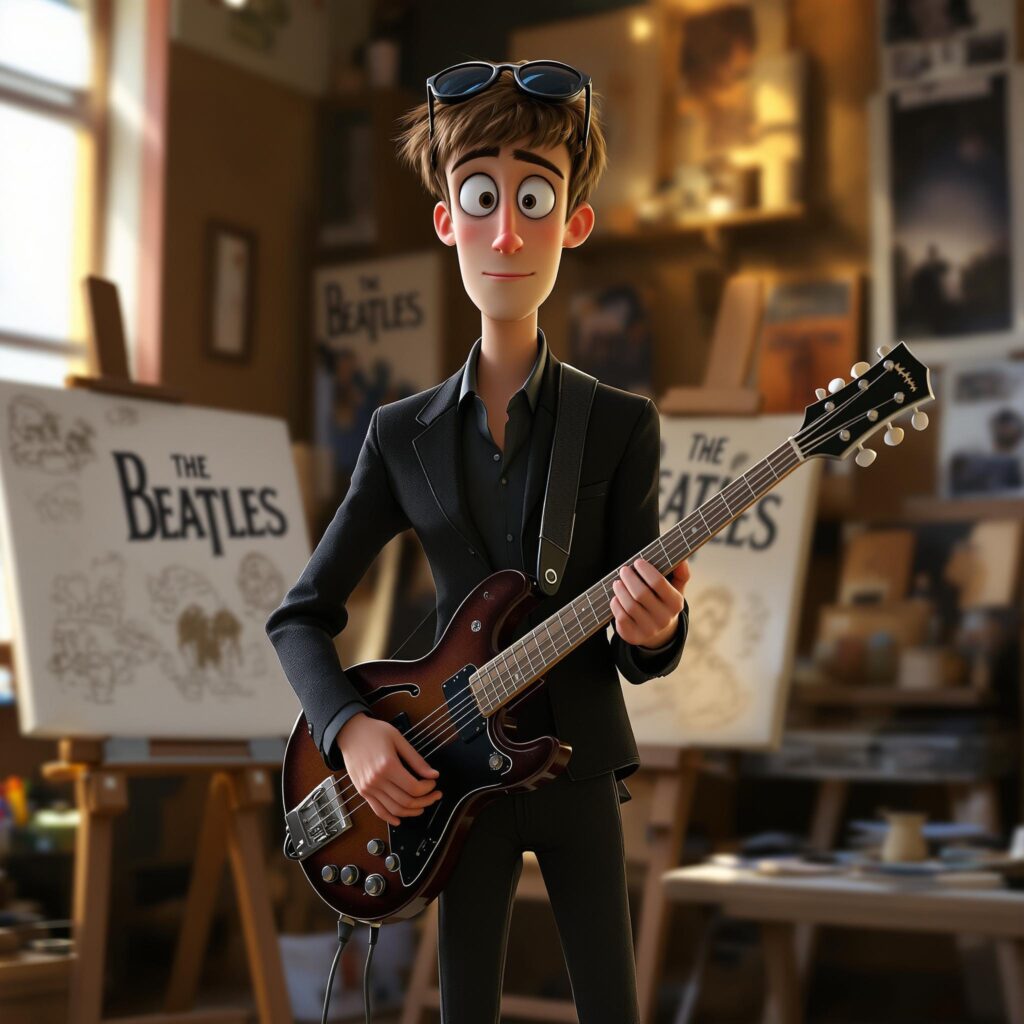Hall of Fame Profile
Introduction
Before Beatlemania swept the world, before the screaming crowds and the global tours, there was a small, tight-knit group of Liverpool lads chasing a dream. Among them was Stuart Sutcliffe—the original Beatles bassist, close friend to John Lennon, and an artist whose legacy remains one of the most poignant and mysterious in the Beatles’ story. Known as “the lost Beatle,” Stuart’s brief but brilliant presence helped shape the band’s identity, style, and spirit in ways that still resonate.
Early Life and Meeting John Lennon
Born in Edinburgh, Scotland, on June 23, 1940, Stuart Fergusson Victor Sutcliffe moved to Liverpool as a child. His early years were marked by a deep love for art—a passion that would define his life. At Liverpool College of Art, Stuart met John Lennon. Their friendship was instant and intense, rooted in a shared love for creativity, rebellion, and the avant-garde. Lennon admired Stuart’s artistic vision and magnetic personality; the two became inseparable, often challenging each other’s ideas and pushing boundaries.
Joining the Beatles
Though Stuart was not a trained musician, John Lennon convinced him to buy a bass guitar with money earned from selling one of his paintings. In 1960, Stuart joined the band—then called the Quarrymen, soon to become the Beatles. His look was striking: dark sunglasses, brooding expression, and a style that set trends before the Beatles were even famous. Stuart’s presence gave the group a new edge, both visually and culturally.
Hamburg: Art, Music, and Romance
Hamburg was the crucible where the Beatles became a band. Stuart, along with John, Paul, George, and Pete Best, endured punishing club gigs and late-night adventures that forged their musical identity. In Hamburg, Stuart fell in love with Astrid Kirchherr, a gifted photographer and artist. Astrid and her friends introduced the Beatles to new styles—leather jackets, mop-top haircuts, existential philosophy, and European art. Stuart’s relationship with Astrid was transformative, inspiring the band’s look and attitude.
The Art of Being a Beatle
While Stuart’s bass playing was basic, his artistic influence was profound. He helped design early Beatles posters, logos, and even contributed to the band’s name (inspired by Buddy Holly’s “Crickets”). Stuart’s sense of style—tight trousers, cool sunglasses, and androgynous fashion—became the blueprint for the Beatles’ image. His friendship with John Lennon was the emotional core of the band’s early days, and his presence challenged the group to think bigger, dream bolder, and embrace the avant-garde.
Struggles and Departure
As the Beatles’ music evolved, Stuart’s passion for visual art pulled him in a different direction. He won a scholarship to study painting in Hamburg under the renowned artist Eduardo Paolozzi. Torn between two worlds, Stuart ultimately chose art over music, leaving the Beatles in 1961. His departure was bittersweet—he remained close to John and Astrid, but the band’s dynamic shifted.
Tragic End and Enduring Legacy
Stuart Sutcliffe’s life was tragically short. In April 1962, at just 21 years old, he died from a brain hemorrhage, possibly linked to an earlier head injury. His death devastated John Lennon and left a permanent mark on the Beatles. Astrid Kirchherr’s haunting photographs of Stuart capture the enigmatic beauty and vulnerability that defined him.
Yet, Stuart’s legacy is immense. He is remembered as the Beatles’ original artistic soul—a visionary who shaped their look, challenged their thinking, and helped launch a cultural revolution. His paintings are exhibited in galleries, and his influence can be seen in the Beatles’ later embrace of art, poetry, and experimental music.
The Human Side: Friendship, Love, and Art
Stuart Sutcliffe was more than a Beatle—he was a friend, a lover, and a trailblazer. His relationship with John Lennon was a deep brotherhood; his romance with Astrid was passionate and inspiring. He lived fiercely, dreamed fearlessly, and left behind a legacy that blends music, art, and the spirit of the 1960s.
Anecdotes and Remembrance
Paul McCartney, though sometimes critical of Stuart’s musicianship, later acknowledged his role in shaping the band’s early days. George Harrison described Stuart as “the most stylish Beatle.” For John Lennon, Stuart’s death was a wound that never fully healed—his presence lingered in Lennon’s art and lyrics for years to come.
Legacy
Stuart Sutcliffe’s story is a testament to the power of art, friendship, and individuality. He remains a symbol of the Beatles’ roots in creativity and rebellion. Fans and historians celebrate him not just as “the lost Beatle,” but as an essential part of the band’s DNA—a reminder that sometimes, those who leave early cast the longest shadows.
